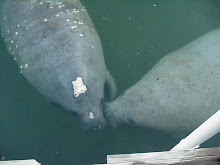The Colonel and I not only stopped by the grave site of "Johnny Appleseed" while in Fort Wayne, Indiana, we also visited the fort of "Mad Anthony" Wayne.
Anthony Wayne (1745-1796) was a United States Army officer, statesman, and member of the United States House of Representatives. He began a military career at the outset of the American Revolutionary War, where his military exploits and fiery personality quickly earned him a promotion to brigadier general and the nickname "Mad Anthony". He later served as General in Chief of the Army and commanded the Legion of the United States.
Fort Wayne was the successor of several previous military outposts at this location. Jean Baptiste Bissot, Sieur de Vincennes built the first fortified trading post on this site in 1704 called Fort Miami.
The French came to the area known as Fort Wayne in the 1680's. Fort Miami was occupied until 1760 when it was surrendered to the British after the French and Indian War.
Fort Wayne was established by Captain Jean Francois Hamtramck under the orders from General Anthony Wayne as part of the campaign against the Indians of the area. The fort was named after General Wayne, who was victorious at the Battle of Fallen Timbers. Wayne may not have chosen the name himself, as the fort was dedicated the day after he left it.
The fort was officially occupied by the army on October 21, 1794. It is a basic stockade with few buildings.
Wayne's army (normally consisted of about 100 men and their families) arrived in the area on September 17, 1794 and Wayne selected the site for the new fort. He wanted a strong fort built, capable of withstanding not only an Indian uprising, but also a possible attack by the British from Fort Detroit. The fort was finished in one month and was capable of withstanding 24-pound cannons. It was placed under the command of Major Hamtramck who had been commander of Fort Knox in Vincennes. The fort was officially dedicated on October 22, 1794 and is considered the founding of the modern city of Fort Wayne.
In 1798, Colonel Thomas Hunt took command of the fort. He had a new fort built several hundred yards north of the original. The first fort was demolished about 1800.
During the War of 1812, Fort Dearborn (in present Chicago) was evacuated and its residents tried to reach Fort Wayne, but were massacred by Indians before they arrived. Fort Wayne was next besieged by the Indian forces of Tecumseh. General William Henry Harrison (who later became the 9th president) arrived on September 12th and broke the siege.
After the war, a town began growing around Fort Wayne. A third fort was built in 1816. The fort was officially abandoned on April 19, 1819, and its contents shipped to Fort Detroit.
In 1796, "Mad Anthony" Wayne died of complications from gout. He was buried at what is now Erie, Pennsylvania. In 1809, his body was disinterred and boiled to remove any remaining flesh. As many bones as possible were placed in two saddle bags and relocated by Wayne's son, Isaac, to the family plot in Radnor, Pennsylvania.
Legend says that many bones were lost along the way which now encompasses much of modern U.S. Route 322 and every January 1st ("Mad Anthony's birthday), Wayne's ghost wanders the highway searching for his lost bones.



















































No comments:
Post a Comment